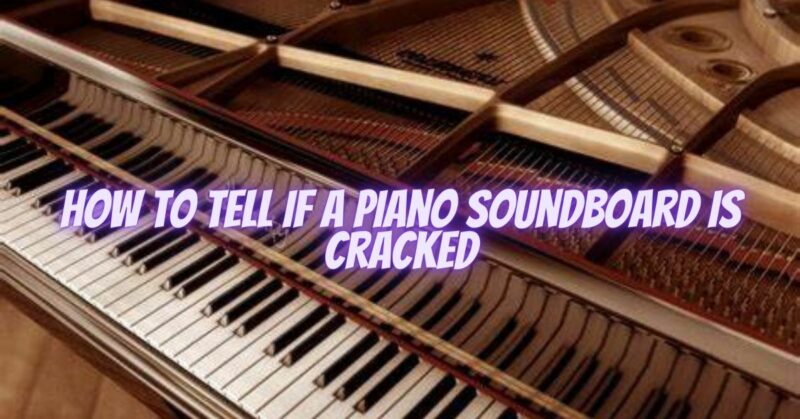The soundboard is a vital component of a piano, responsible for producing the instrument’s resonant and beautiful tones. Over time, however, the soundboard can develop cracks, affecting the piano’s sound quality and overall performance. In this article, we will explore some telltale signs that indicate a cracked piano soundboard, helping you identify potential issues and seek timely professional assistance.
- Audible Changes in Sound:
One of the primary indications of a cracked soundboard is a noticeable change in the piano’s sound quality. Cracks in the soundboard can disrupt the even transmission of vibrations, leading to a loss of resonance and a decrease in tonal richness. If you notice a significant reduction in volume, diminished sustain, or a lack of clarity in the sound, it could be a sign that the soundboard has been compromised.
- Buzzing or Rattling Noises:
Cracks in the soundboard can create unintended buzzes or rattling noises when certain notes or chords are played. As the vibrations from the strings interact with the damaged soundboard, they can cause unwanted sympathetic vibrations or irregular resonances, resulting in buzzing or rattling sounds. If you detect such noises that persist or occur consistently in specific areas of the keyboard, it may indicate a cracked soundboard.
- Visual Examination:
Performing a visual inspection can help reveal any visible cracks on the soundboard. Open the piano lid and shine a flashlight across the surface of the soundboard, focusing on the area behind the strings. Look for any visible cracks or separations in the wood. Cracks may appear as fine lines or larger gaps, depending on the severity of the damage. It’s important to note that some cracks may not be immediately visible, especially if they are located deeper within the soundboard.
- Changes in Performance:
A cracked soundboard can affect the piano’s overall performance and responsiveness. If you notice a lack of consistency or unevenness in key response, with certain keys feeling softer or producing an altered sound compared to others, it could be an indication of a compromised soundboard. Cracks can impact the transfer of energy from the strings to the soundboard, resulting in variations in touch and performance across different keys.
- Expert Evaluation:
If you suspect a cracked soundboard or encounter any of the aforementioned signs, it is advisable to seek the expertise of a professional piano technician. A qualified technician will have the knowledge and experience to thoroughly inspect the instrument, including the soundboard, and accurately diagnose any potential issues. They can assess the severity of the cracks, determine the appropriate course of action, and provide recommendations for repair or restoration.
Conclusion:
The soundboard is a crucial element of a piano, and cracks in this component can significantly impact the instrument’s sound quality and performance. By paying attention to audible changes, buzzing noises, conducting visual inspections, noting changes in performance, and seeking expert evaluation, piano owners can detect potential soundboard cracks early on. Timely identification and professional assistance are key to addressing these issues promptly and ensuring that the piano’s soundboard is restored to its optimal condition, allowing for continued enjoyment of the instrument’s beautiful music for years to come.

